Anand's Google Nexus One Review
by Anand Lal Shimpi on April 3, 2010 3:40 AM EST- Posted in
- Smartphones
- Mobile
It’s Mac vs. PC All Over Again
Until Windows Phone 7 arrives, Palm fixes its issues or MeeGo starts shipping in earnest, the inevitable comparison is between Android and the iPhone OS. And in my weeks of using Google’s Nexus One, I can honestly say that the differences really boil down to much of the same things that separate PC and Mac users.
The Mac vs. PC analogy starts as soon as you look at the unlock screen for the phone. Here’s what you see on Apple’s iPhone vs. Google’s Android:
|
Google Nexus One
|
Apple iPhone 3GS
|
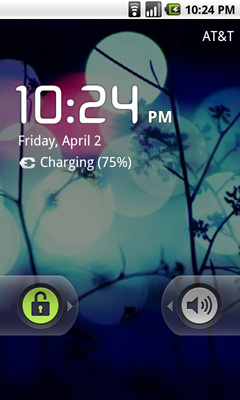 |
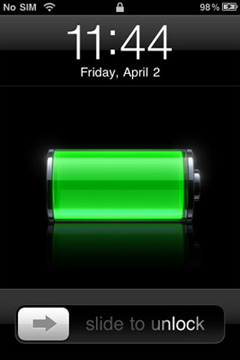 |
The iPhone allows for a single interaction: unlock the phone. The Nexus One gives you two: unlock or toggle sound on/off. The divergence continues once you unlock the phones:
|
Google Nexus One
|
Apple iPhone 3GS
|
 |
|
Apple’s home screen is a structured list of icons. Each swipe reveals another page that looks the same. You can customize placement of the app icons, and control what appears in the bottom row of four, but ultimately you’re flipping through a virtual index of your applications.
The Nexus One’s home screen is much more configurable/versatile. You start out with a u-shaped arrangement of icons. At the top, a Google search widget. Your home screen starts in the middle, you can swipe two screens to the right or left. On the iPhone you’re basically reading a book, on the Nexus One you’re navigating a field.
Swipe right to left and you’ll see a Gmail and Gtalk icon. Swipe left to right instead and you’ll see a weather widget and some more icons. The weather widget tells you the weather wherever you’re currently located (GPS/cellular network triangulation ftw) as well as gives you the latest news headlines all updated in real time.
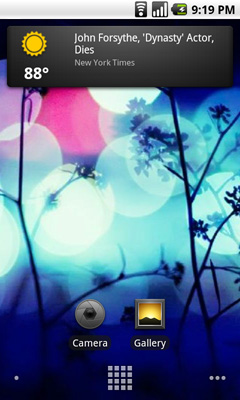 |
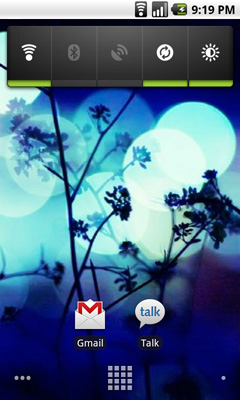 |
Apple’s predictable UI allows no room for quick ways to disable things like Bluetooth or 3G. The Nexus One ships with a Power widget that lets you quickly toggle WiFi, Bluetooth, GPS, auto syncing and auto brightness control. The only thing that’s missing is a quick way to disable 3G.
The remaining pages ship barren. It’s up to you to add items to them. You can do so by hitting the Nexus One’s contextual menu button and then clicking Add. You can add shortcuts to applications or interactive widgets. On the iPhone the only way you get something onto one of the home screens is by downloading/installing the app. There are no widgets, no concept of shortcuts, Apple abstracts all of this from the underlying software. As far as the user is concerned you install apps to the home screen and that’s how you access them. That’s your file system. Point, touch, access.
 |
 |
In Android it’s all a little less abstracted. Your home screens are like virtual desktops. True, you don’t run applications on them, but the widgets are similar enough. You create shortcuts to applications for easy access. If you want a list of all of the apps on your phone, just click the virtual button at the bottom of your home screen:
This is more of the traditional iPhone presentation, except instead of swiping to see more pages of apps you scroll down. As you scroll the vanishing list wraps around an imaginary cube to give the UI more depth.
|
Google Nexus One
|
Apple iPhone 3GS
|
 |
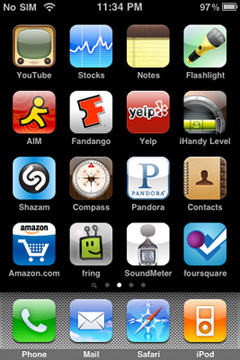 |
The fundamental difference in approach to UI really shows how Google and Apple view the smartphone. Apple views it as a passive extension to the desktop/notebook. You use it when you want to make a call or quickly access a program or application. Your primary sources of information consumption are in other forms (e.g. desktop, notebook, tablet).
Google’s view is a bit more ambitious. Not having a desktop/notebook platform (yet) to rely on, Android’s role is understandably more pronounced. You get more customization and personalization options. The focus isn’t on simplicity, but rather customizable functionality. The sort of flexibility you’d expect out of a larger computing device, but on your smartphone. Again, it makes sense because Google doesn’t currently offer a larger computing device.
Those who cried foul when Apple tied everyone’s hands with the iPhone OS, those who listed everything that Windows Mobile could do that Apple couldn’t, if you are one of these people then Android is a far more natural fit. Those who wanted the focused simplicity the iPhone offered on the other hand, will probably feel a bit uncomfortable with Android.


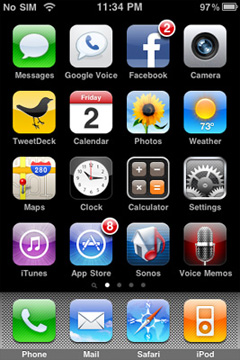








95 Comments
View All Comments
strikeback03 - Tuesday, April 6, 2010 - link
So does a 2mm difference in width really make that much difference in how you hold it and keyboard feel? As both phones are quite large compared to my HTC Diamond.Anand Lal Shimpi - Tuesday, April 6, 2010 - link
It really has to do with the autocorrect on the keyboard and key spacing it seems. I switched back to the Nexus One today and definitely make more errors that I have to manually correct, whereas the iPhone seems to do a better job of knowing exactly what I'm trying to say/type.The performance and screen are very nice on the Nexus One however :)
Take care,
Anand
Locut0s - Sunday, April 4, 2010 - link
Thanks for the great review Anand!! I've been thinking of getting a smart phone for some time now and have been eyeing either a Nexus one or whatever Apple does with their next iteration of their iPhone. This review has placed the Nexus one squarely in my top 3. As always fantastic writing, thanks! However I should point something as a reader living outside the US. Google Voice is still not available in Canada or anywhere else outside the US. So if you are reading this review and that feature sounds nice keep this in mind!!Chloiber - Sunday, April 4, 2010 - link
If you like the Google Nexus, read some reviews about the coming (in the next days - weeks) HTC Desire - I bet you like it even more :)Zokudu - Sunday, April 4, 2010 - link
Wonderful article Anand.This epitomizes what I love about your writing.
Keep up the great work
Anand Lal Shimpi - Sunday, April 4, 2010 - link
Thank you :)Take care,
Anand
Mumrik - Sunday, April 4, 2010 - link
"Most of the time you all scare the crap out of me. I want to impress, I want you guys to be happy with what I write. I want every article to be the most well received thing ever. Every writer wants that. No one ever gets it. So when I see comments telling me that you’re eagerly anticipating my Nexus One review, I get a turtle complex. And not the ninja kind."I don't think you need to worry too much about all that Anand. Your work over the last few years especially has been top-of-the-class.
Lifedelinquent - Sunday, April 4, 2010 - link
wonder if the htc evo will use the more updated snapdragon proc with the better gpu?Chloiber - Sunday, April 4, 2010 - link
It will use the Snapdragon QSD8650 (N1/Desire: QSD8250) with 1GHz.http://www.engadget.com/2010/03/23/htc-evo-4g-is-s...
Don't know what that implies about the built in GPU though.
LongTimePCUser - Sunday, April 4, 2010 - link
Anand,It sounds like your biggest problem with the Google phone was the on-screen keyboard.
Have you tried the slide-out keyboard on the Motorola Droid?
The big advantage is that you can see the entire display screen, including type-ahead suggestions, while typing.